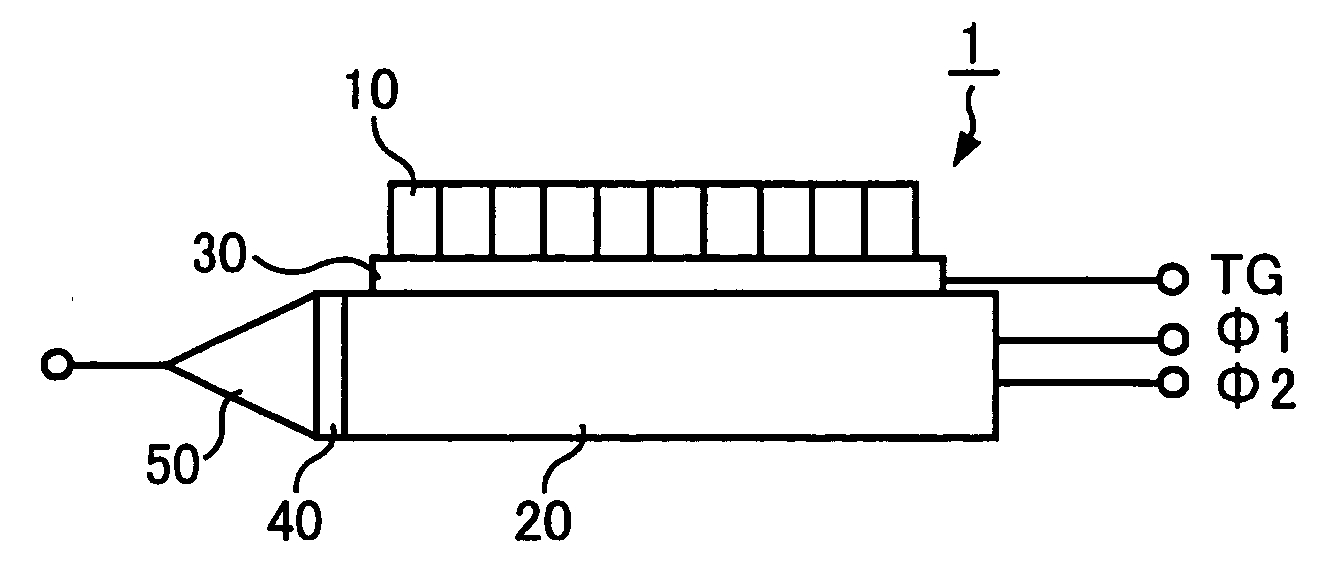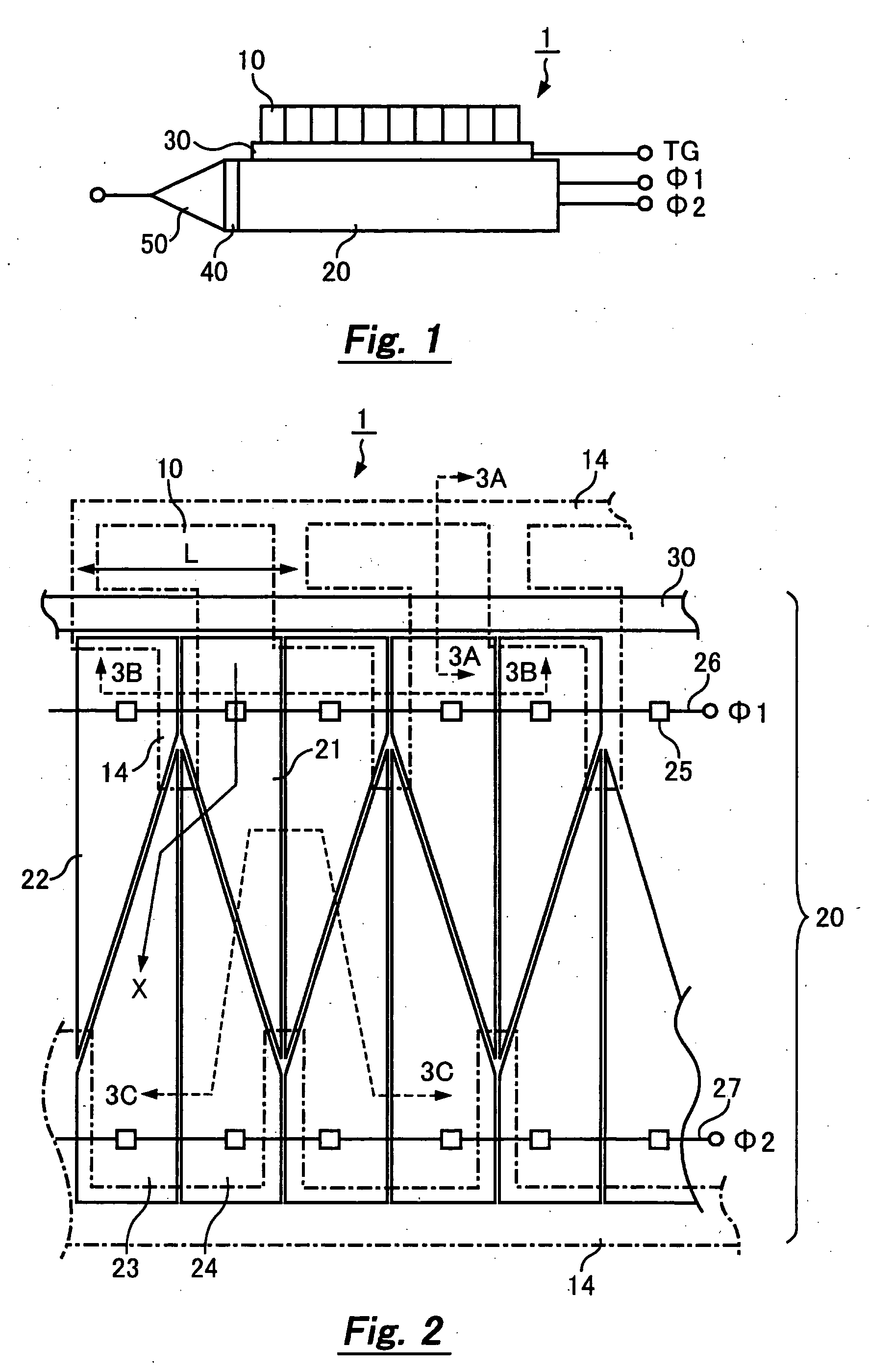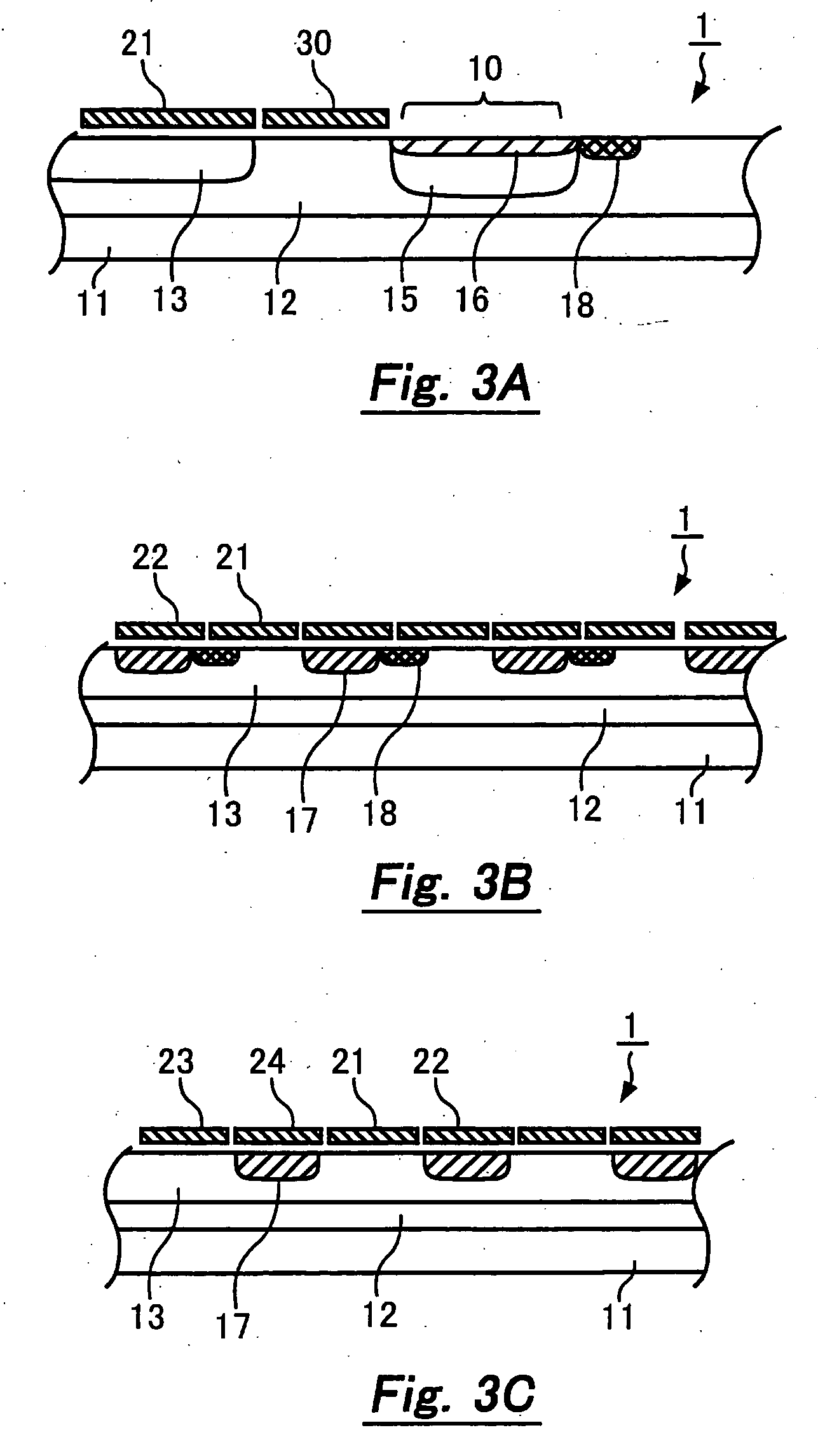Solid-state imaging apparatus and charge transfer apparatus
- Summary
- Abstract
- Description
- Claims
- Application Information
AI Technical Summary
Benefits of technology
Problems solved by technology
Method used
Image
Examples
first embodiment
[0041] Referring first to FIGS. 1 to 3, the configuration of a CCD image sensor of the present invention is explained.
[0042]FIG. 1 is a schematic diagram of the CCD image sensor of this invention. The CCD image sensor 1 includes photodiodes 10, a transfer gate electrode 30, a CCD register 20, a charge detection section 40, and an output circuit 50. The photodiode 10 is a photoelectric conversion section that generates a charge by photoelectric conversion. The transfer gate electrode 30 is an electrode that passes the charge generated by the photodiodes 10 to the CCD register 20. The CCD register 20 is a charge transfer section or a charge transfer device that transfers the charge generated by the photodiode 10. The charge detection section 40 is a circuit that detects the charge transferred from the CCD register 20. The output circuit 50 is a circuit that outputs a signal according to the charge detected by the charge detection section 40 to the outside.
[0043] The CCD image sensor...
second embodiment
[0066] Referring now to FIG. 5, the configuration of the CCD image sensor according to a second embodiment of the invention is described. FIG. 5 is a plan view of the CCD image sensor of the second embodiment. Like FIG. 2, FIG. 5 is an enlarged view of the photodiodes 10, the transfer gate electrode 30, and the CCD register 20 of the CCD image sensor 1 shown in FIG. 1.
[0067] In FIG. 5, the same reference symbols as in FIG. 2 designate the same elements. Though the illustration of the contact 25 and the metal lines 26 and 27 are omitted in FIG. 5, the configuration is the same as in FIG. 2. The operation is the same as in FIGS. 4A and 4B if the electrodes 21 to 24 are replaced by electrodes 41 to 44.
[0068] The electrodes 41 to 44 have a rectangular shape as in the CCD image sensor of FIG. 7. The facing sides of the φ1 storage electrode 41 and the φ2 barrier electrode 44, and the facing sides of the φ1 barrier electrode 42 and the φ2 storage electrode 43 are parallel with the electr...
PUM
 Login to View More
Login to View More Abstract
Description
Claims
Application Information
 Login to View More
Login to View More - R&D
- Intellectual Property
- Life Sciences
- Materials
- Tech Scout
- Unparalleled Data Quality
- Higher Quality Content
- 60% Fewer Hallucinations
Browse by: Latest US Patents, China's latest patents, Technical Efficacy Thesaurus, Application Domain, Technology Topic, Popular Technical Reports.
© 2025 PatSnap. All rights reserved.Legal|Privacy policy|Modern Slavery Act Transparency Statement|Sitemap|About US| Contact US: help@patsnap.com



